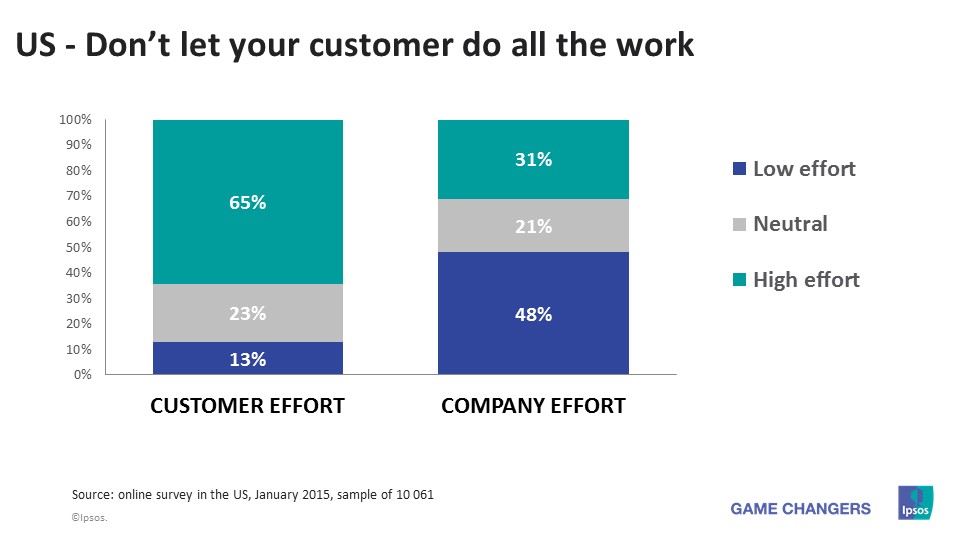Are your customers working too hard?
Measuring customer effort is not enough.
Customer Effort has received a lot of interest and attention in customer experience management in the recent past. The Customer Effort Score (CES) featured in the 2010 Harvard Business Review article: “Stop Trying to Delight Your Customers“. In this article the authors prove a link between Customer Effort and two customer experience metrics, namely the likelihood to keep doing business with a company and the intention to spread positive word of mouth.
CES is measured by asking a single question: “How much effort did you have to personally put forth to handle your request?".
Overall the premise is that the less effort customers have to put in during an interaction, the more likely they are to recommend and continue doing business with the company. This is particularly relevant in complaints management. It makes intuitive sense that when customers face negative ‘critical incidents’, or ‘moments of truth’ in the customer experience, the more effort they have to put in to resolve the issues and the more dissatisfied they will be. This is expected to have a significant impact on customer advocacy and loyalty.
Ipsos carried out a survey* across 7 sectors in the US in order to investigate how companies respond to customer issues or critical incidents, and the extent to which they are successful at mitigating resulting negative customer outcomes. As part of this research we investigated the role Customer Effort plays on customers’ satisfaction with complaints handling and on broader outcomes such as advocacy and loyalty.
One of the key findings is that measuring Customer Effort in isolation is not enough. While it does link to customer outcomes, we found that it is the Customer:Company Effort Ratio that really matters. The ratio, which takes both perceived customer and company effort into account, is 3 times more predictive of a customer’s propensity to use the company again following a negative critical incident or complaint than the Customer Effort score alone.
Customers’ perceptions of the effort that companies put in to resolve their issue have a significant impact on advocacy and customer loyalty. Without taking into account customers’ perceptions of how dedicated companies are to solving their issue, we are missing a key part of the effort equation. One key implication is that companies should start tracking the Customer: Company Effort Ratio as a red flag/indicator of potential churn and bad mouthing and strive to optimise it. We detail below the key findings of our research and the business implications for companies.

Key business implications
- Companies need to start tracking the Customer:Company Effort Ratio (C:CER) as better indicator of potential churn and bad mouthing
- Companies can improve the ratio by letting their customers know that they are taking their issue seriously and doing their best to resolve it
- Companies need to understand how to best respond to customer issues to maximise the return on effort and optimise the Customer:Company Effort Ratio.



![[LinkedIn Live] Ipsos Global Trends: The Workplace Edition](/sites/default/files/styles/list_item_image/public/ct/event/2024-11/ipsos-global-trends-workplace-edition-thumb.jpg?itok=wucV_Pn4)